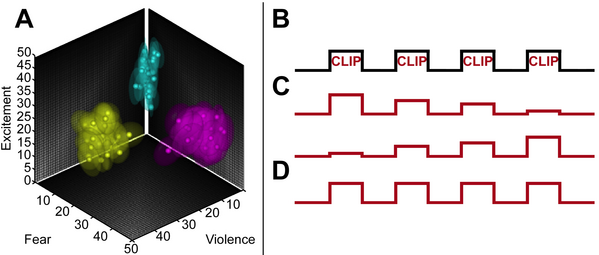Violence is a frequent occurrence in television shows and movies, but can watching it make you behave differently?
Although research has shown some correlation between exposure to media violence and real-life violent behavior, there has been little direct neuroscientific support for this theory until now.
Researchers at Columbia University Medical Center’s Functional Magnetic Resonance Imaging (fMRI) Research Center have shown that watching violent programs can cause parts of your brain that suppress aggressive behaviors to become less active.

In their paper, Columbia scientists show that a brain network responsible for suppressing behaviors like inappropriate or unwarranted aggression (including the right lateral orbitofrontal cortex, or right ltOFC, and the amygdala) became less active after study subjects watched several short clips from popular movies depicting acts of violence.
These changes could render people less able to control their own aggressive behavior. Indeed the authors found that, even among their own subjects, less activation in this network was characteristic of people reporting an above average tendency to behave aggressively. This characteristic was measured through a personality test.
A secondary finding was that after repeated viewings of violence, an area of the brain associated with planning behaviors became more active. This lends further support to the idea that exposure to violence diminishes the brain’s ability to inhibit behavior-related processing.
None of these changes in brain activity occurred when subjects watched non-violent but equally engaging movies depicting scenes of horror or physical activity.

“These changes in the brain’s behavioral control circuits were specific to the repeated exposure to the violent clips,” said Joy Hirsch, Ph.D., professor of Functional Neuroradiology, Psychology, and Neuroscience and Director of the Center for fMRI at CUMC, and the PLoS ONE paper’s senior author. “Even when the level of action in the control movies was comparable, we just did not observe the same changes in brain response that we did when the subjects viewed the violent clips.”
“Depictions of violent acts have become very common in the popular media,” said Christopher Kelly, the first author on the paper and a current CUMC medical student. “Our findings demonstrate for the first time that watching media depictions of violence does influence processing in parts of the brain that control behaviors like aggression. This is an important finding, and further research should examine very closely how these changes affect real-life behavior.”
Article: Repeated Exposure to Media Violence Is Associated with Diminished Response in an Inhibitory Frontolimbic Network, Christopher R. Kelly, Jack Grinband1, Joy Hirsch, PLoS ONE 2(12): e1268. doi:10.1371/journal.pone.0001268





Comments